“This low-nine-second, street-driven Monaro proves there’s a lot more to the deep South than just tourist attractions!”
While some say hindsight is a wonderful thing, others say it’s a bastard, as it points out all of the mistakes that we should have been smart enough never to make. Riverton’s Brendon Shearing knows about hindsight all too well, but instead of sulking about the decision that he made many years ago to sell his beloved Monaro, he instead set out to build one even better.
“I built up an HQ coupe in the early ’90s, which ran a tunnel-rammed 427, with TH400 trans and nine-inch diff; it ran mid 12s. I then purchased a ’68 Impala sedan, which was also a big block car, but being in my 20s and partial to bourbon, I found it hard to keep both of them going! So I ended up selling the Monaro, mainly because it was the hardest to keep running,” he says, recalling the situation.
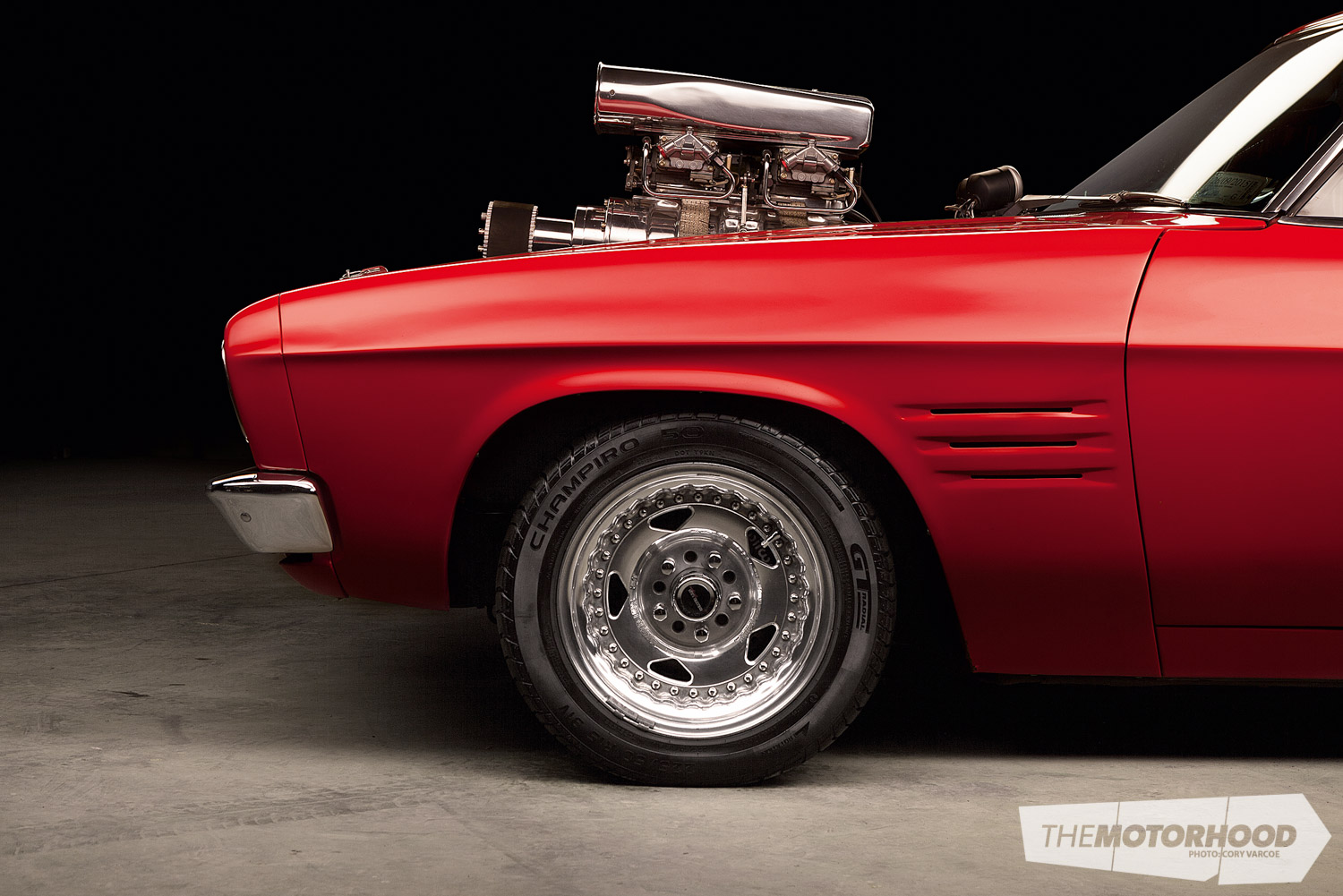
After years of owning the more-sedate Impala and focusing on building up his business, drag racing started again in the deep south, and he decided it was time for something with a bit more power, and what better car to build than another Monaro?
What he found was a panel-beaten bare shell that was ready for paint. While at the start he thought it was just the project he was after, part way through the build he stumbled on a more complete one, and did the maths on what it’d cost to buy it, rather than finish the shell he already had. It wasn’t hard to work out that he’d save a bunch of time and money acquiring the second car, and as luck had it, his best mate Warren Black had already been putting pressure on him to sell the first one, so a deal was quickly struck and soon they had a Monaro each.
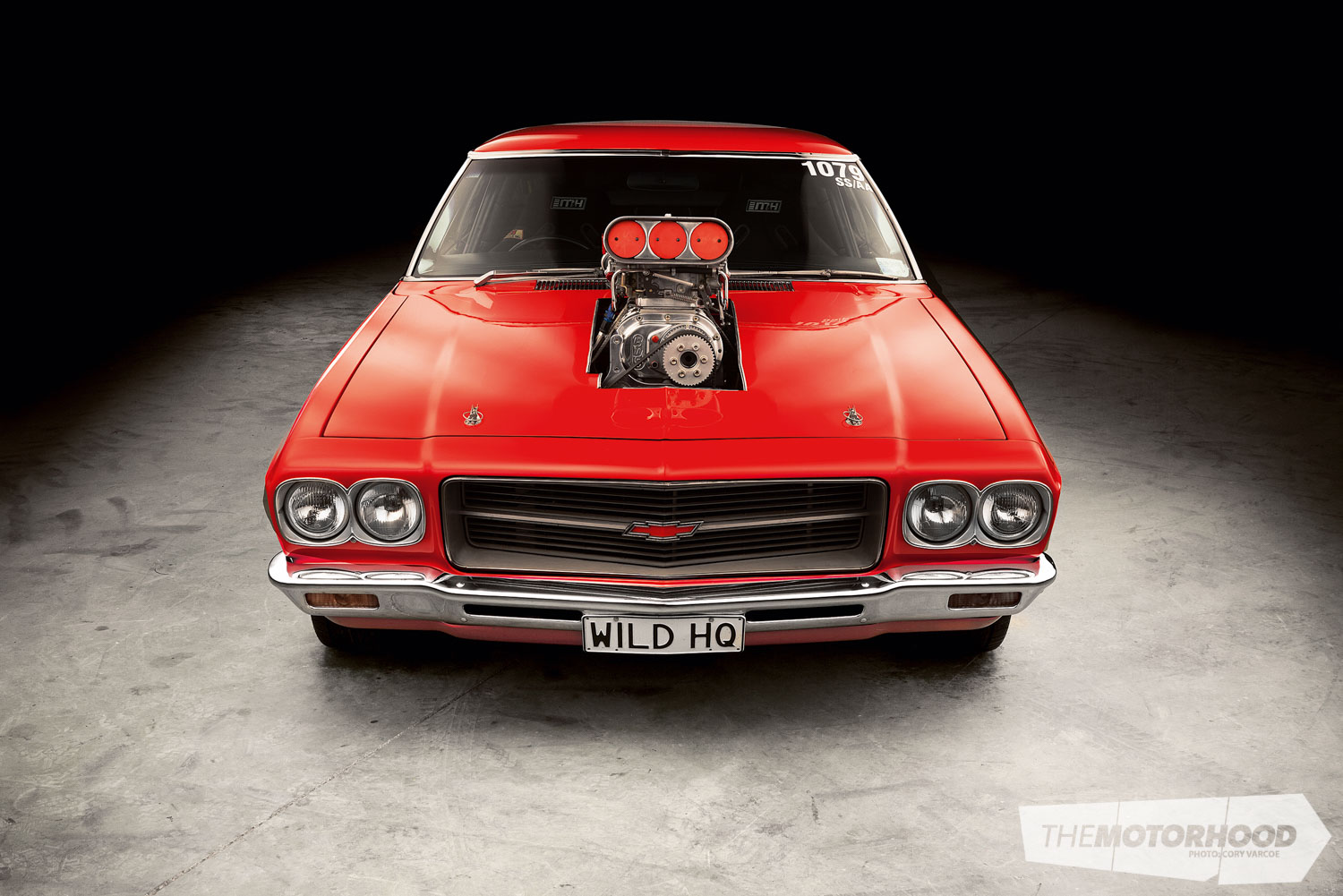
The second car was no ordinary Monaro. Already known as ‘WILDHQ’, it had been around the Christchurch scene for some time, and had last been painted in the year 2000. To live up to its number plate the car ran a big block, and the rear end had been mini tubbed.
“A mate from Christchurch had known the car since the ’90s and said it was a good one, so I bought it sight unseen minus the motor and trans,” Brendon says of the new purchase.
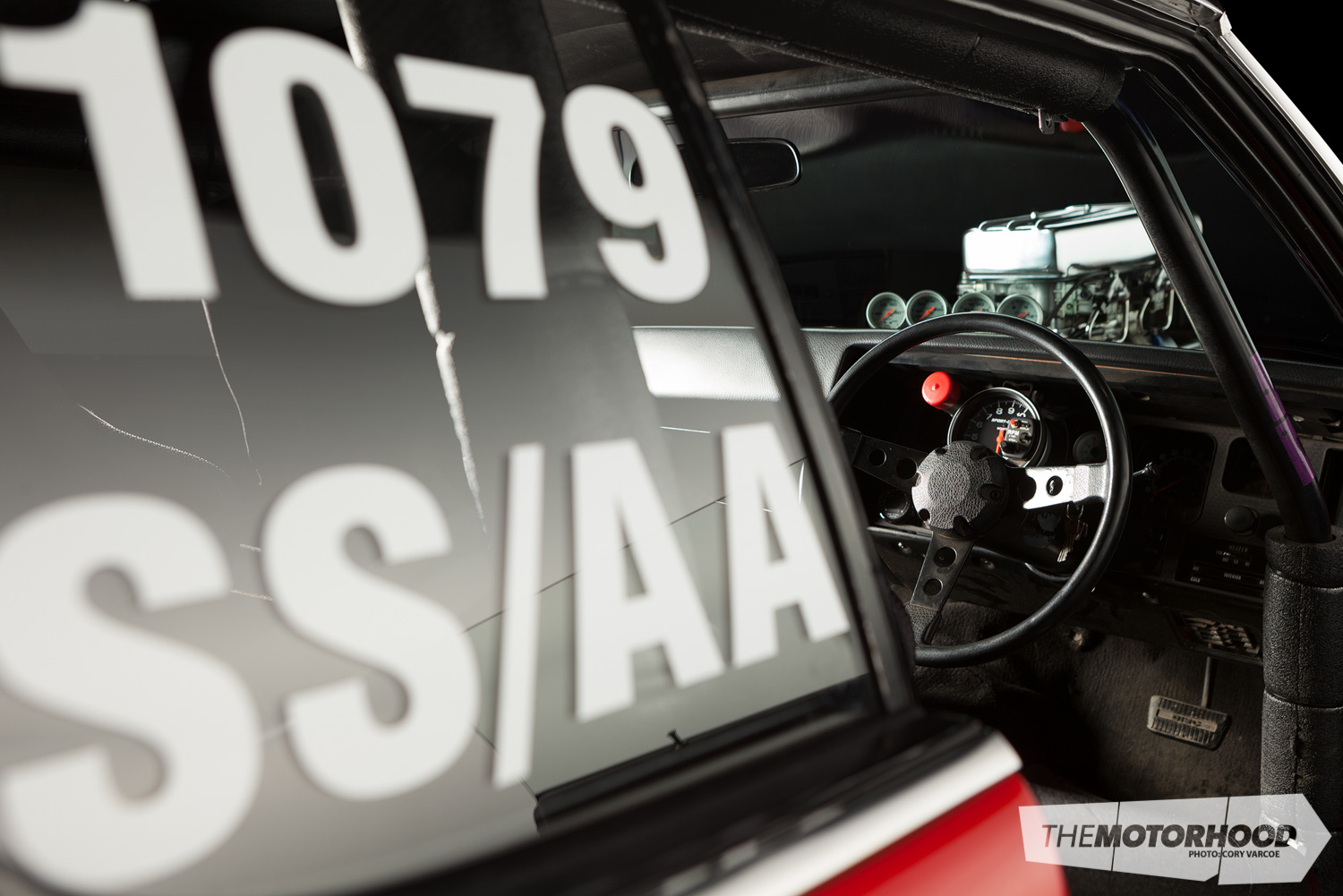
While he had a 468ci (7.7-litre) big block being built for it, he set about adding his own touches to the rolling shell, fine-tuning the interior in the process. That meant getting rid of the roll cage, to allow him to keep the rear seat in the car. After all, the local track — Teretonga/ Southern Dragways — has a strict no-burnout rule, so the chances it would ever run into the 10s were slim … or so he thought.
One of the 28-spline axles broke at the car’s debut meet, the first of many issues he’d encounter in his quest for speed over the next few years, though he didn’t know that at the time.
“I got some new axles and then a TCI trans with a bigger converter, and the car then ran low 11s,” he says, which we’re sure you’ll agree was damn good going considering no burnouts, though it wasn’t quick enough for Brendon.
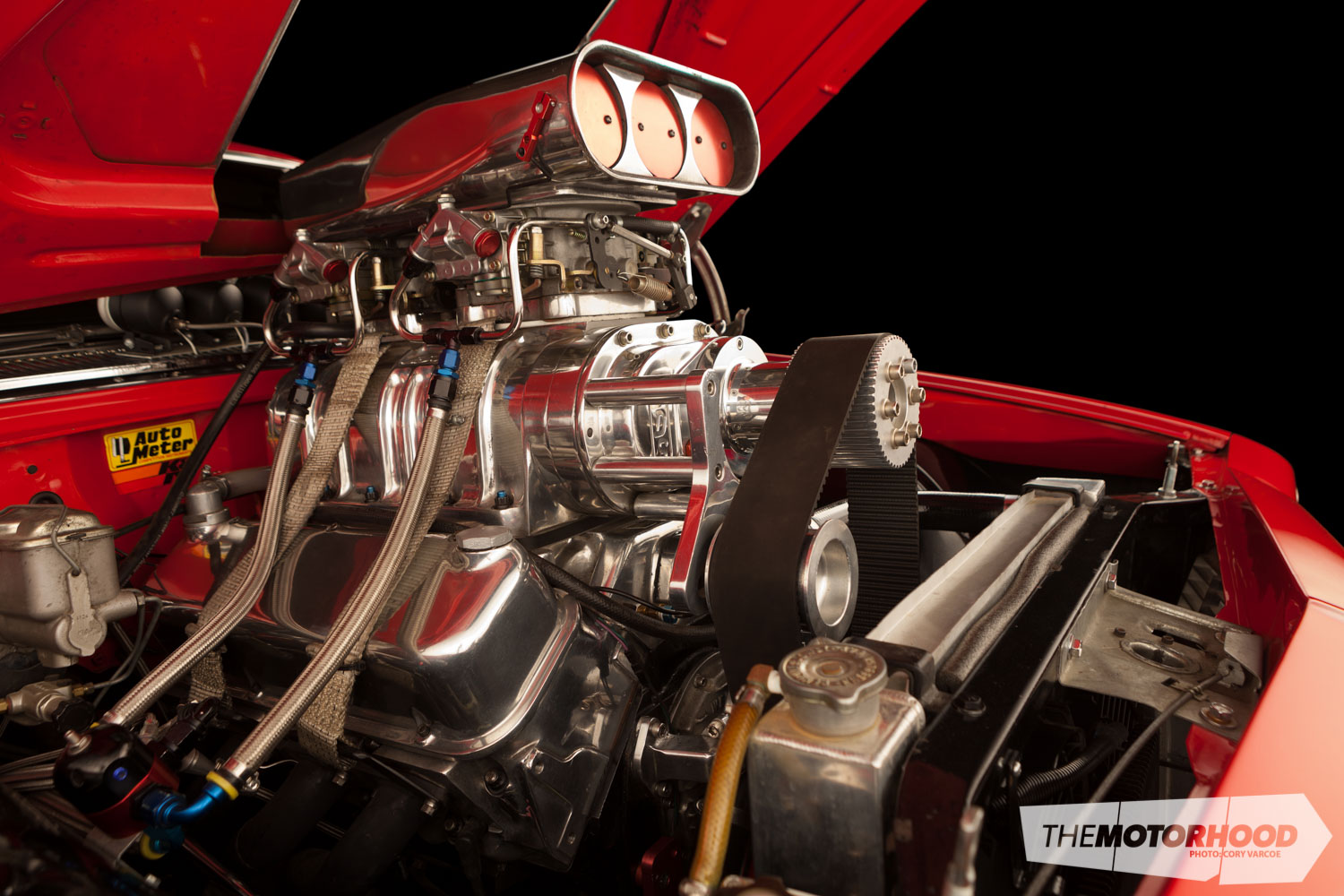
It wasn’t long before the motor was showing a few issues though, so it was stripped down and rebuilt, and taken out to 509ci/8341cc in the process. Greg Hiddlestone was responsible for the new build, with a cast-iron block as the base filled with an Eagle crank, Eagle rods, and JE pistons. A Kelford cam was used, which now sends instructions to Dart 360 heads filled with severe-duty stainless valves, roller rockers, and triple valve springs with titanium retainers.
The drag-racing bug had well and truly bitten by this time, and the engine was topped off with a Weiand intake manifold, BDS 10-71 supercharger and twin 1250cfm Dominator carbs. The fuel tsunami dumped by those Dominators is lit by a comprehensive ignition system activated by an MSD crank trigger module and MSD crab-style distributor.
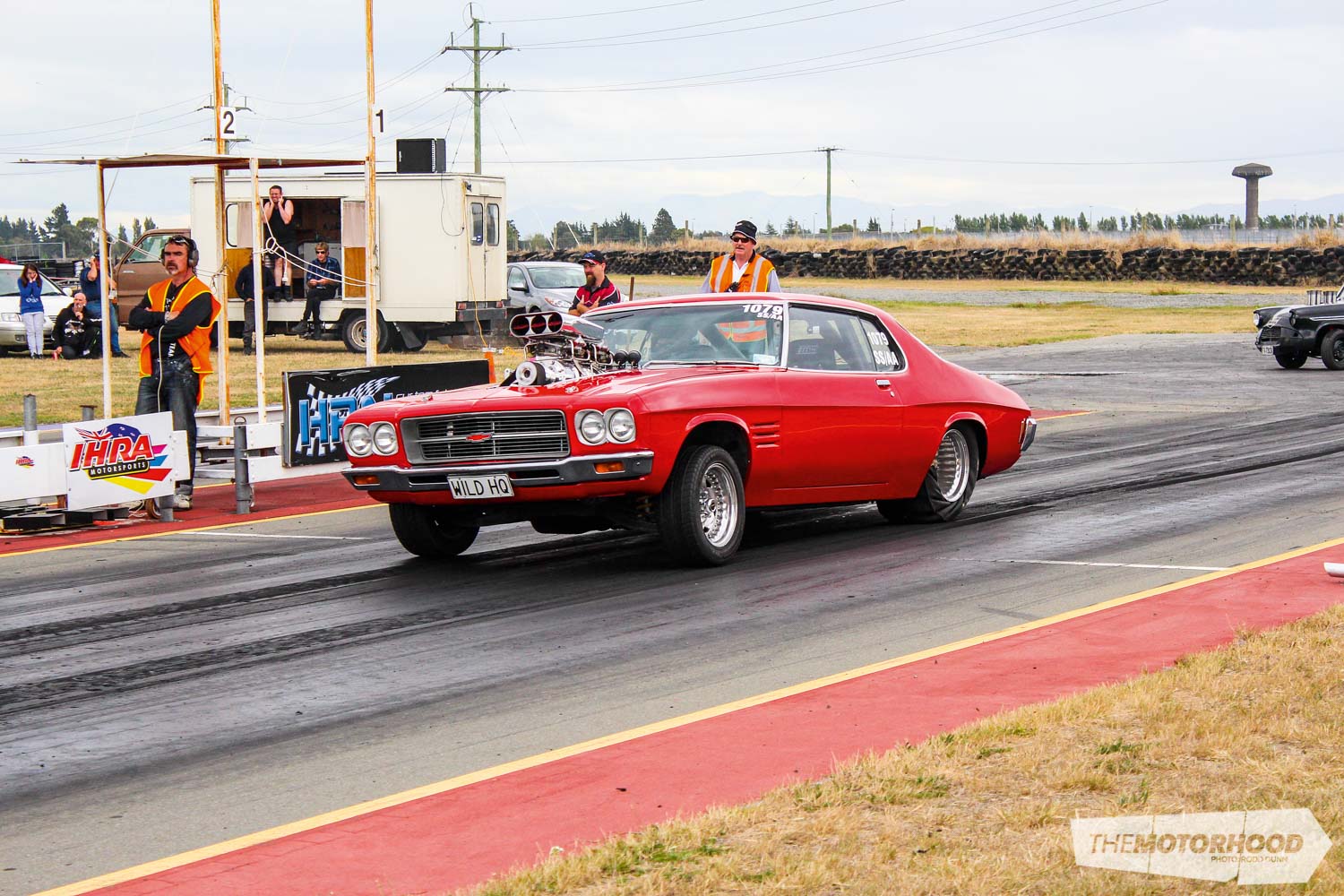
The first test for the new and improved combo took place at Ruapuna, where it didn’t just dip into the 10s, but almost bypassed them completely, running a wild 10.0 at 145mph using the width of the track to do so. This understandably earned him a vigorous fist-shaking from the area steward for running into the 10s with no cage, and he was told to stick to half-track passes for the rest of the day, or put it on the trailer, so he continued to work on his launches — but the transmission broke in the process.
The seven-hour tow back home saw Brendon’s mind working overtime, and the outcome wasn’t just to fix the trans, but rebuild the back end at the same time.
The job of fixing the rear was given to Roger Binnema at Balclutha Automotive Services. That seems a bit far from home, but Brendon says, “The reason we went to Roger’s was that he’s a drag racer himself. He’s very knowledgeable and is never too busy to talk things through,” which is hard logic to argue with, especially at this level of the game.
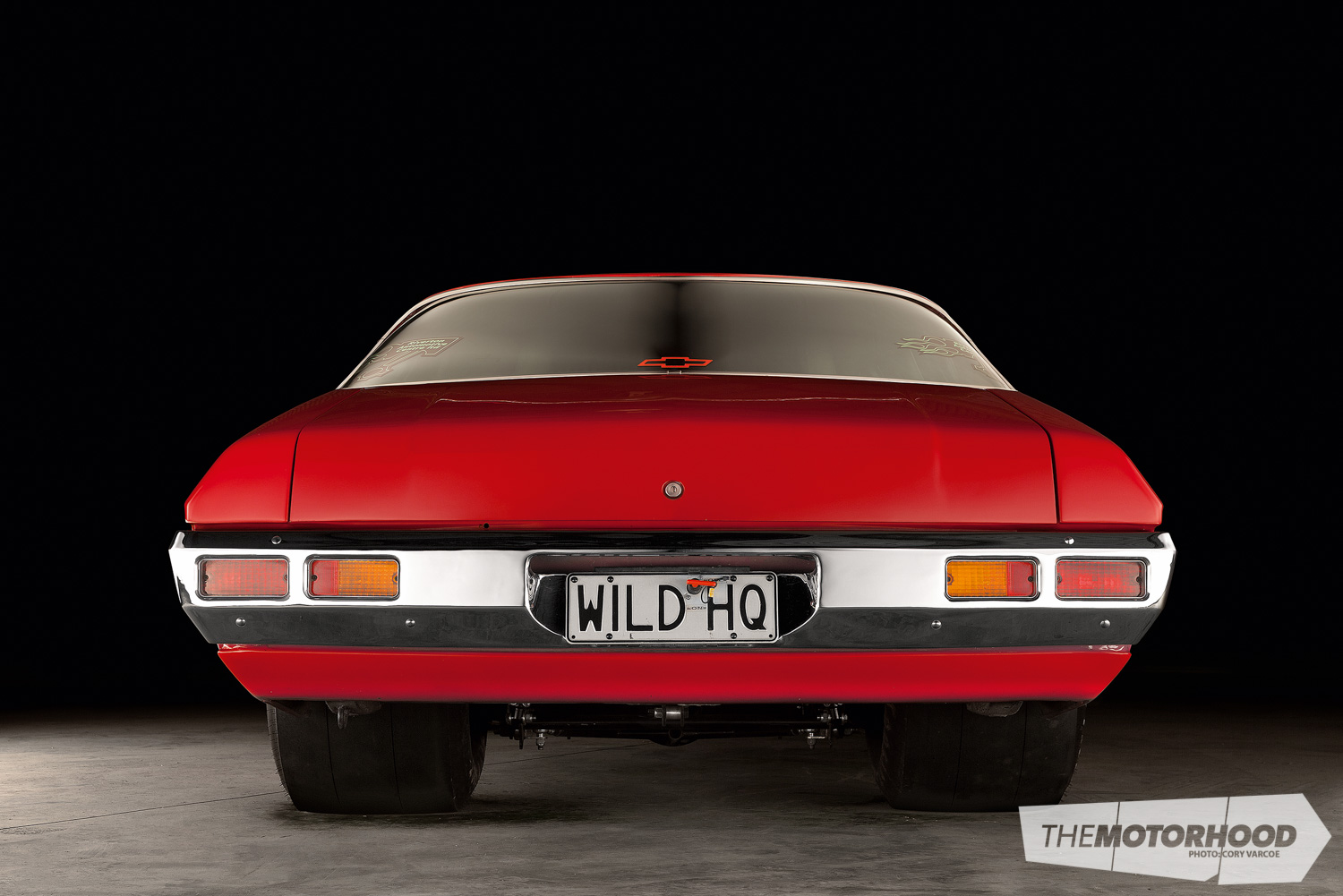
While the car was there, some of Roger’s passion for drag racing must have rubbed off, as no longer would the mini-tubbed rear end get tweaked, as the whole lot was removed in favour of full tubs. With this came a four-link set-up and a new floating-axle diff as well as a six-point cage.
“We talked about a ladder bar set-up but I wanted the car to sit low, so the four-bar was the way to go!” Brendon says, quick to also point out that if the car hadn’t been mini tubbed already he would have never chopped it up to fit the massive 18.5x31x15 Hoosier Quick Time Pro tyres under there. Up front he opted for the same style of Centreline rim, albeit in a far more sensible size and wrapped with 225/50R15 rubber.
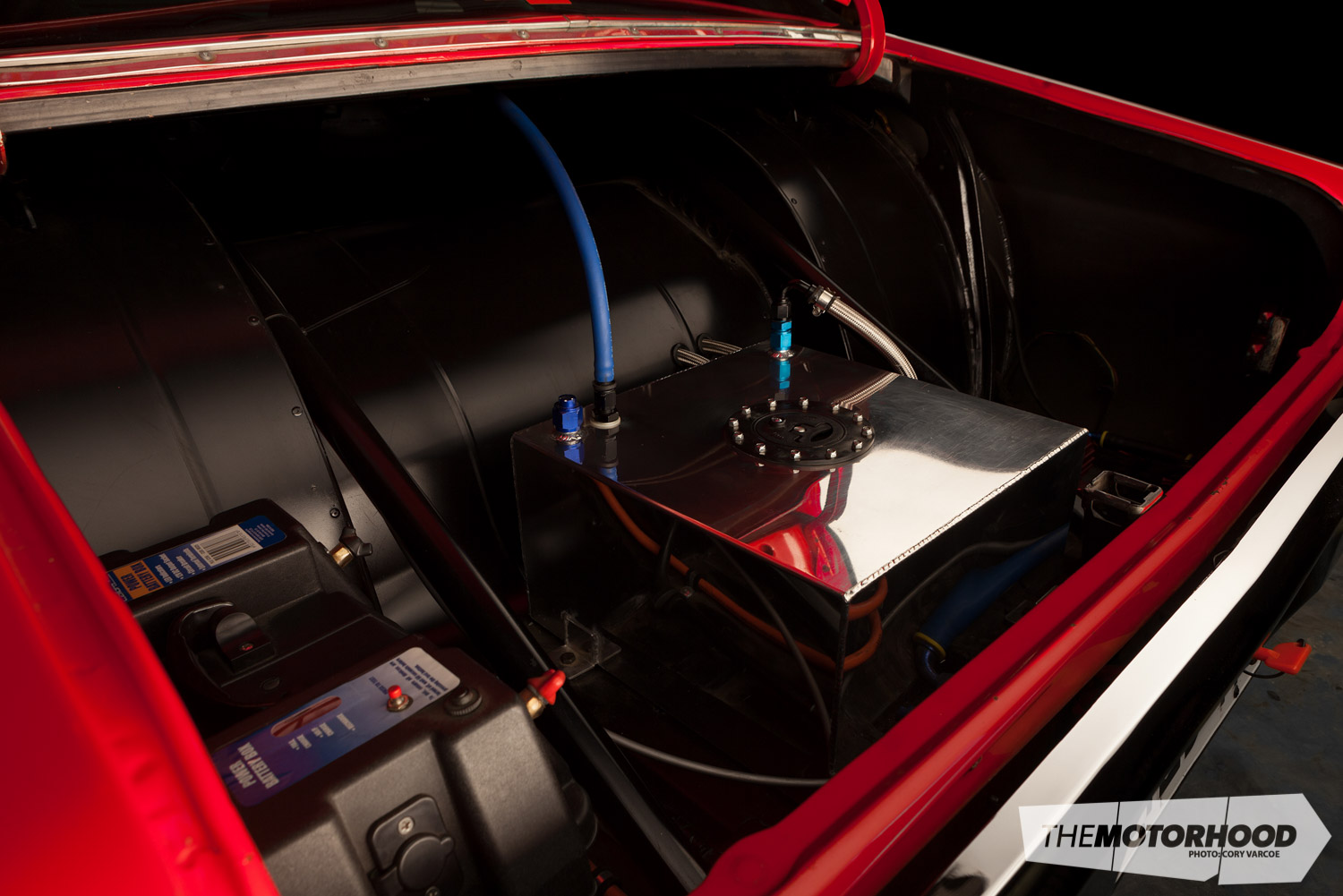
While the thought of constructing a purpose-built drag car did cross his mind at this stage, especially when dealing with how to keep the car road-legal, he resisted, as he was far too attached to the Monaro to give up now.
Besides, living as far away from a prepped drag strip as you can get in the country, it just didn’t make sense to build something he’d only get to drive a few times a year. The Monaro was the only way forward, and it had to be street-legal, and stupidly quick.
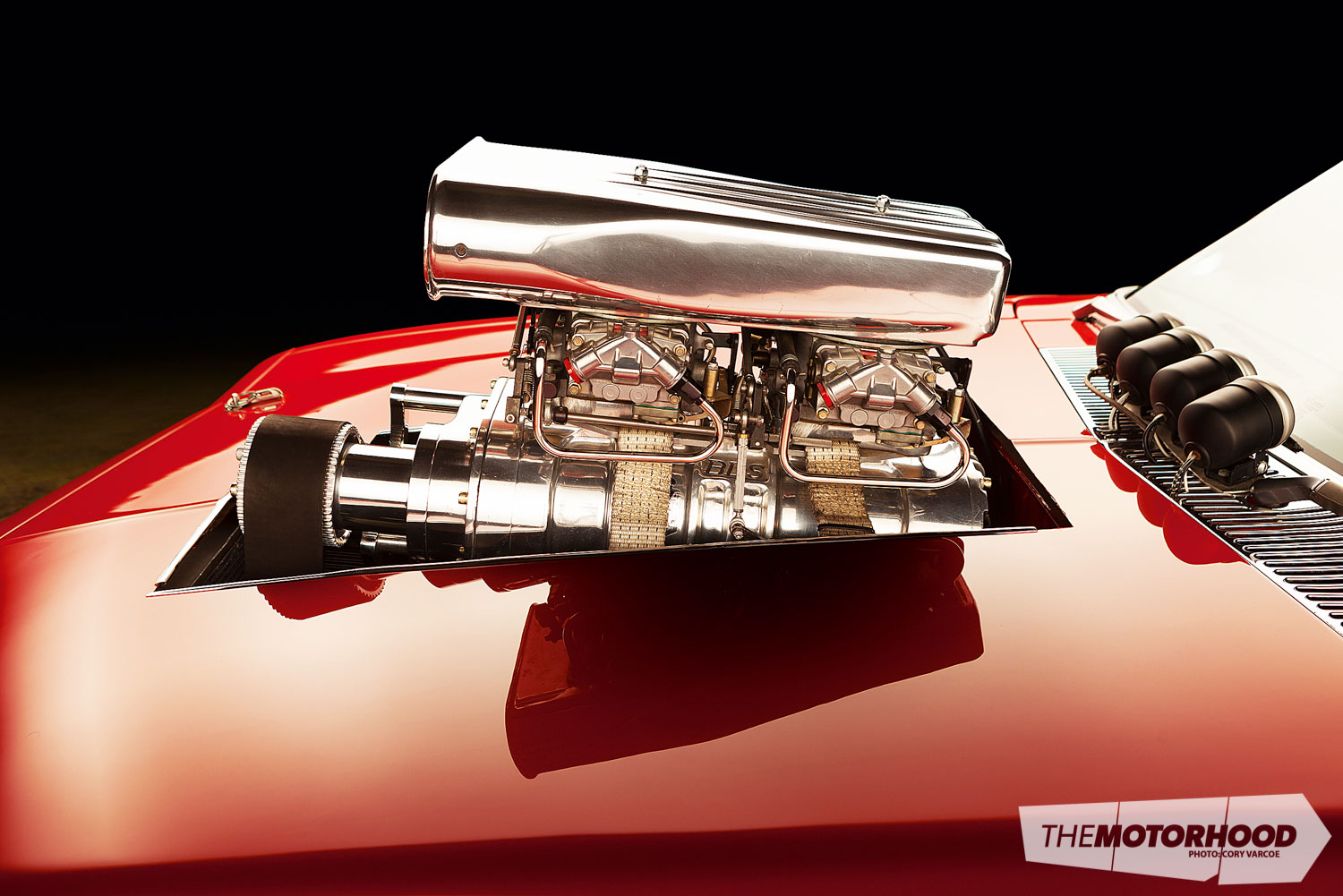
With the rear end complete, the car was taken home for the work to continue. Brendon wanted it to sit as low as possible and get the supercharger down nice and low to pass cert, which was no easy task, but with a bit of clever thinking, he made it work.
The motor was dropped and moved rearwards, which meant moving the wiper motor and heater in the process. Of course the two-inch four-into-one extractors and twin three-inch exhausts were then far harder to fit than they could have been, but it was work Brendon was happy to do to nail the tough look.
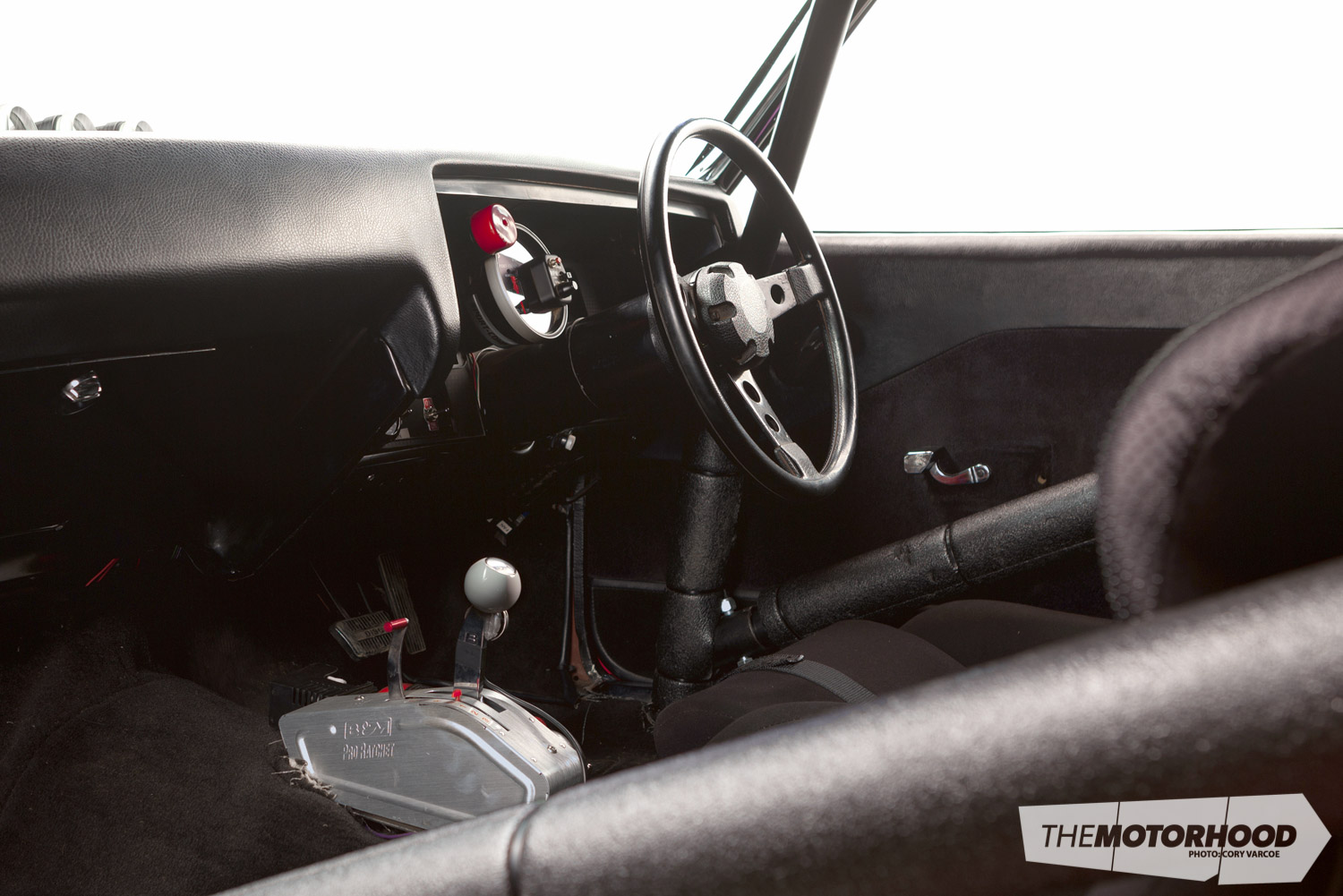
The upside of the engine setback was that there was now plenty of room up front for a massive radiator, a pair of fans and a big oil cooler, which the car would also need. At this stage Brendon’s good mate, Scott Edwards, got involved too, using his skills to help with both wiring and fabrication aspects of the car, including building a new radiator support as well as a diaper for the sump.
The rest of the combo included a Chuck Mann–built TH400 trans with 4000rpm stall converter and full manual reverse-pattern shift body. This sends power rearwards through a Noel Atley–built billet-ended driveshaft through to a Winters nine-inch diff.
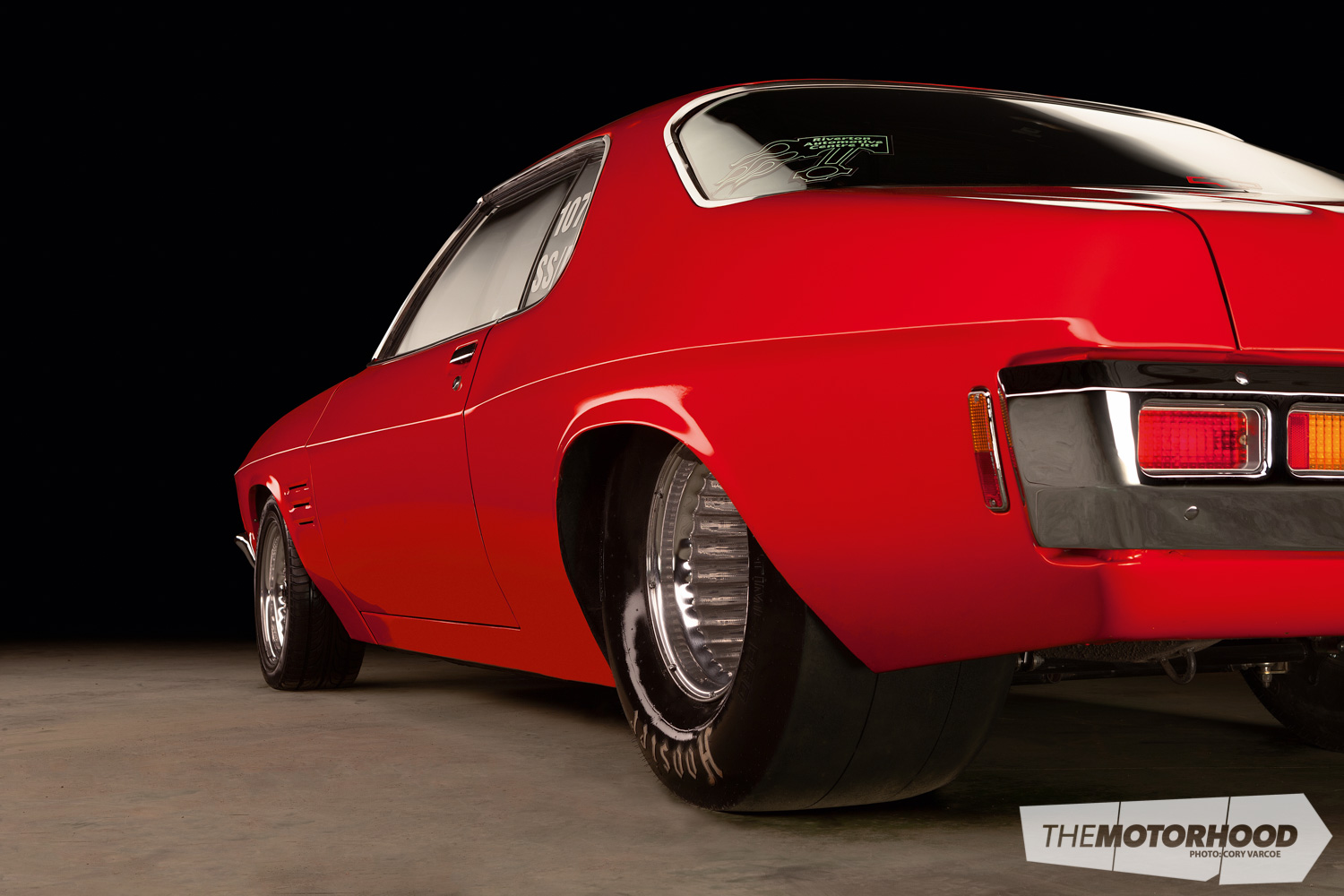
The new combo was tested on the local no-burnout track, where it ran a best of 10.4 seconds, leaving big black lines well past half track, much to the delight of the crowd and dismay of the officials. With this in mind, he couldn’t wait to return to Ruapuna, where he could test the car on a proper prepped surface, and of course could warm the tyres beforehand and use all the power on offer.
The result of that next seven-hour drive north was an impressive 9.4-second pass at 148mph, and a smile a mile wide to match.
Over the season, a few small changes saw the PB drop to the current 9.34 at 149mph (240kph). The only changes from street to strip were a set of DOT Hoosier tyres, filling the tank with Avgas and removing the exhaust, and that’s a seriously tough street car, tough enough to currently sit at number nine on our quickest street-car list, not to mention claim the title of quickest street car on the mainland.
But we all know that every success in drag racing is met with another hurdle, and at the end of last season, after an epic mission changing diff heads in a hotel car park, the transbrake was used for the first time. What should have resulted in the PB dropping even further instead resulted in a broken axle, ending not only Brendon’s day, but his season too.
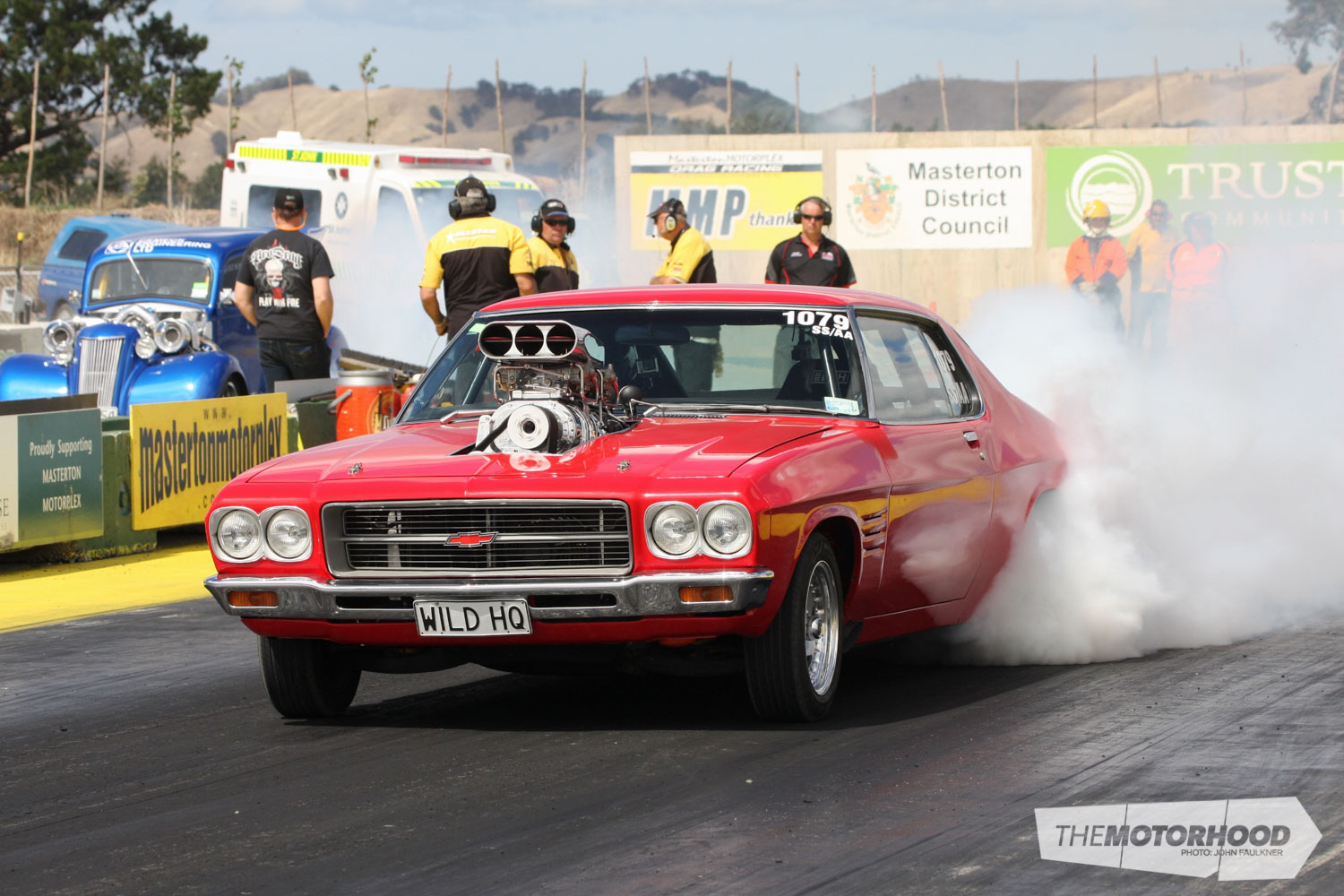
With a pro mod–style alloy bolt-through diff head and tough 40-spline axles now in place, as well as a new sway bar fitted to help with 60-foot times, Brendon can’t wait to see what it’s capable of.
While there was talk of making the 1500km-plus trip up to Meremere to race at the recent Father’s Day Drags, bad weather in the lead-up to the event put paid to that. That said, with the driveline issues now a thing of the past, chances are we’ll see the car in the North Island at least once this coming season.
But for now Brendon will see if he can get the car to go faster at Ruapuna, which is a massive achievement for any drag car, let alone one that’s not only street legal but actually street driven. He’s aware that he can’t rest on his laurels though, as the shell he sold to best mate Warren is now completed, and looking to take the title of fastest Monaro in the land, having already made in excess of 900hp … It’s a good thing then that Brendon has a new motor combo coming, to stay one step ahead? Yep, it looks like this South Island street-car battle has only just begun, but either way, the winner is set to be a seriously-tough Monaro!
NB. Brendon has now run a PB of 8.91 at 157mph, as of April 11, 2015, and breaking his transmission in the process!
- Vehicle: 1971 Holden Monaro
- Engine: 509ci (8341cc) big-block Chev, Eagle crank, Eagle rods, JE forged pistons, ARP fasteners, Kelford solid roller cam, severe-duty stainless valves, Dart 360 heads, roller rockers, stud girdle, triple valve springs, titanium retainers, Weiand intake manifold, twin 1250cfm Dominator carbs, BDS 10-71 Stage 4 supercharger, Aeromotive fuel pump, Aeromotive fuel pressure regulator, 40-litre aluminium fuel tank, MSD crank trigger, MSD crab-style distributor, MSD7 ignition box with two-step limiter, two-inch four-into-one extractors, twin three-inch exhausts, Flowmaster mufflers, triple-flow alloy radiator, twin electric fans, transmission cooler
- Driveline: TH400 transmission, reverse-pattern manual valve body, trans-brake, 4000rpm stall converter, SFI flex plate, Winters nine-inch diff, strange 40-spline axles, Pro Mod alloy bolt-through head
- Suspension: King Springs super-low springs, 90-10 front shocks, Competition Engineering four-link, QA1 rear shocks, Balclutha Automotive sway bar
- Brakes: Eight-inch booster, Four-pot Wilwood calipers, vented slotted rotors
- Wheels/tyres: 15×7- and 15×14-inch Centreline Convo Pro, 225/50R15 GT Radial front tyres, 18.5x31x15 Hoosier Quick Time Pro rear tyres
- Exterior: Custom red respray
- Chassis: Tubbed rear end
- Interior: Six-point roll cage, M&H seats, five-point harnesses, B&M Pro Ratchet shifter, Auto Meter gauges
- Performance: 8.91 at 157mph
This feature was published in NZV8 Issue No. 115. You can pick up a copy of the issue here.





